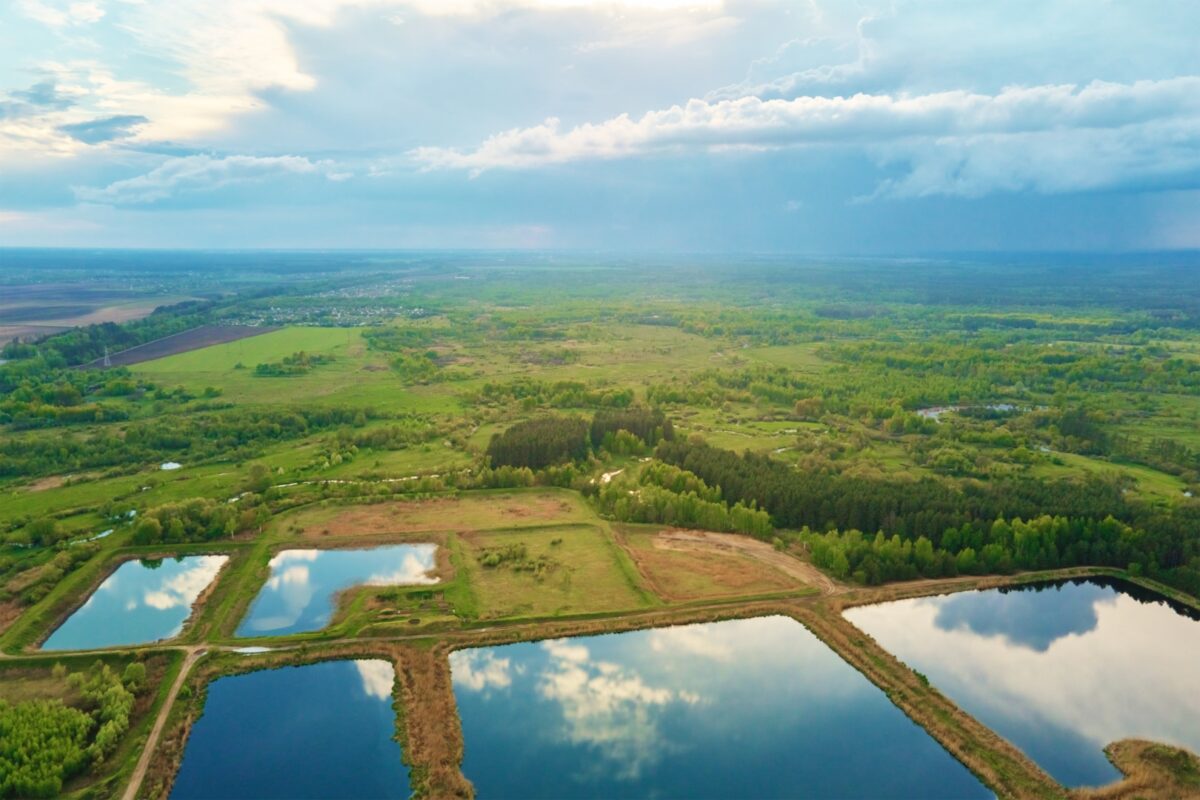Differences between Retention Ponds and Detention Basins: Which is Right for Your Property?

Posted on July 5, 2023 by Jeremiah Sooter
With continued urbanization, the need for effective stormwater management has become increasingly important. Retention ponds and detention basins are two structures that play a critical role in managing stormwater runoff in newly developed urban centers.
Retention ponds are designed for long-term water storage, allowing it to seep into the ground or evaporate slowly. In contrast, detention basins hold and release stormwater at a controlled rate for short-term water storage.
Both are crucial components of civil engineering projects aimed at mitigating any negative impacts of urbanization on natural water systems. Understanding the essential functions and differences of each can help us appreciate the importance of mitigating stormwater effectively.
Vocabulary Differences
The most confusing part of retention ponds or detention basins is the vocabulary. It’s an important distinction to avoid any confusion. In the case of today’s blog, we’ll use any one of the words below in talking about both retention and detention catchments:
- Ponds
- Basins
- Chambers
- Catchments
- Reservoirs
- Watershed
- Drainage
Retention Ponds vs. Detention Ponds: What are the Key Differences?
When managing stormwater runoff, retention catchments or detention ponds are standard solutions. While they share some similarities in their purpose, there are critical differences in their design and construction.
Retention catchments get designed to hold water for extended periods, allowing it to infiltrate the ground or evaporate slowly. They are typically used to improve water quality by removing pollutants and sediment before the water is released back into nearby streams or rivers.
Detention ponds, on the other hand, are designed to store excess stormwater runoff during heavy rain events temporarily. They release this stored water at a controlled rate to prevent downstream flooding and erosion.
While retention catchments and detention ponds are essential in managing stormwater, understanding their design and construction differences can help determine which solution is best suited for new developments.
Purpose of Retention Ponds
Retention chambers are an essential component of modern water management systems. Often designed to serve as long-term water storage solutions that help:
- Manage stormwater runoff
- Establish wildlife habitat
- Protect the environment from any negative impacts of excess water
These ponds are typically created by excavating a depression in the ground and lining it with a waterproof material to prevent seepage. As excess water accumulates during heavy rainfall or snowmelt periods, the pond slowly drains away over time.
It’s that slow drainage that reduces the risk of flooding downstream while also providing a valuable source of stored water for future use. That makes retention chambers an essential part of sustainable water management practices and plays a vital role in safeguarding the health and safety of our communities and natural ecosystems.
Purpose of Detention Basins
While on the other hand, detention chambers play a crucial role in managing water resources while preventing flooding during heavy rainfall events. These basins temporarily store excess water and release it slowly, which reduces the volume and velocity of stormwater runoff.
The primary purpose of detention chambers is to prevent downstream flooding by holding back water during peak flow periods. They typically get used in urban areas where large amounts of impermeable surfaces, such as roads and buildings, prevent rainwater from soaking into the ground naturally.
By providing short-term storage for excess water, detention chambers help to protect downstream communities from the damaging effects of flash floods. The design and function of detention chambers play an essential role in the following:
- Managing stormwater runoff
- Protecting public safety
- Filter off contaminants
Picking the Right Solution for Your Property Development or Place of Business
When managing stormwater runoff around a property development or business, detention catchments, and retention reservoirs are two popular solutions that can effectively control the flow of excess water.
However, choosing between these options can be a challenging task. Several factors can impact the decision on which type will work best:
- Space availability
- Soil type
- Purpose of installation
- Budget constraints for construction and maintenance
To help you make an informed decision about which solution is right for your property, contact the dirt work experts at Ground Up Services by calling (417) 439-1009.
They understand the differences between these two solutions and can help assess your property’s specific needs and limitations. Furthermore, their dirt work experts can help you decide what solution will be most effective for stormwater management while considering your budget constraints.